
My fighter checkout was in the Curtiss P-40 Warhawk. When I pushed that throttle forward for the very first time, I watched in complete horror as that long pointy nose swung to the side—there was a lot more torque with the P-40 than what I was used to in the AT-6!1 ended up zigzagging down the runway trying to correct my rudder and stick mistakes. In all honesty, I wasn't that impressed with the P-40 at all. Not because it tried to kill me that first time I] took off in one, but because about the only thing it could do well in combat was dive. It took forever for the Allison-powered P-40s to struggle to 16,000 feet, and believe me, we weren't able to get much higher than that. By the time! got comfortable in the P-40 and with visions of white sand beaches and tropical Pacific weather, I was told] would be sent to North Africa. Before I knew it, 1 was half a world away in Casablanca and a new member of the 325th Fighter Group known as the Checkertails.
Joining the Checkertail Clan Early P-40 combat
By May of 1943, I was flying combat with the 317th Fighter Squadron at the controls of a P-40F; now, that airplane was a real dog” to go into combat with! It had a Rolls-Royce Merlin engine that replaced the Allison, but it still couldn't get us much past 18,000 feet. Most of our early missions were escorting B-26, B-25, and A-20 twin-engine bombers. I recall one mission where we were supposed to rendezvous with some South African A-20 Havocs and it was darn near impossible to keep up with them. They were faster than we were as our tongues were hanging out trying to keep up with them. Even at full throttle, the P-40 lagged behind. Like I said, it was a dog, but in a turn chasing tails with an enemy fighter, it was a real scrapper.
Diese Geschichte stammt aus der November - December 2022-Ausgabe von Flight Journal.
Starten Sie Ihre 7-tägige kostenlose Testversion von Magzter GOLD, um auf Tausende kuratierte Premium-Storys sowie über 8.000 Zeitschriften und Zeitungen zuzugreifen.
Bereits Abonnent ? Anmelden
Diese Geschichte stammt aus der November - December 2022-Ausgabe von Flight Journal.
Starten Sie Ihre 7-tägige kostenlose Testversion von Magzter GOLD, um auf Tausende kuratierte Premium-Storys sowie über 8.000 Zeitschriften und Zeitungen zuzugreifen.
Bereits Abonnent? Anmelden
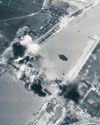
A-26 BRIDGE BUSTER
Courage under fire in North Vietnam
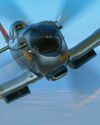
Spitfire FIGHTER-BOMBERS
The iconic fighter was surprisingly effective in other roles
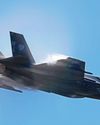
"BAT WING" LIGHTNING
The Charlie-Model F-35
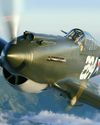
OUTGUNNED & OUTMANNED
A losing battle against a well-equipped foe
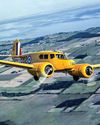
Wichita Wonder
Cessna’s I-50 proves to be astonishingly necessary for RCAF trainees
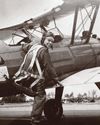
WARRIORS REMEMBERED
Families gather in England to pay tribute to a fallen WW II aircrew
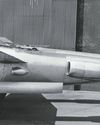
Lockheed XP-49: Trying to Do the P-38 One Better
IT MADE NUMEROUS TEST FLIGHTS and at least one cross-country journey, yet no air-to-air picture of it appears to have survived.

Keeping 'em Flying!- The new generation of warbird pilots, restorers and mechanics
The new generation of warbird pilots, restorers and mechanics. Nearly 80 years after the end of World War II, the fighters, bombers, and trainers that defended freedom continue to enthrall and inspire audiences at airshows, thanks to generations of warbird pilots, maintainers, restoration specialists and collectors. In our September, 2022 issue we introduced you to the young warbird pilots, maintainers and restorers who are already beginning to displace more "experienced" warbird fliers and fixers.

The Corsair Maker- Bringing the Vought Corsair to the fleet was a daunting challenge that spanned nearly three years.
When the first production Corsairs exited the Stratford factory in June 1942, Guyton, as seen here, was tapped to manage the flight and production test program. Armament was improved to six wing-mounted .50s, displacing the wing fuel tanks now placed forward of the cockpit which necessarily was moved rearward by 32 inches. Overall length was increased, armor plate added, landing, arresting and tail gear improved, aileron control enhanced, and a new version of the R2800 engine was incorporated. But those significant improvements unearthed numerous idiosyncrasies that would take an extended period to make the Corsair acceptable for carrier operations

STARFIRES Over Korea
F-94 pilots tangle with MiGs